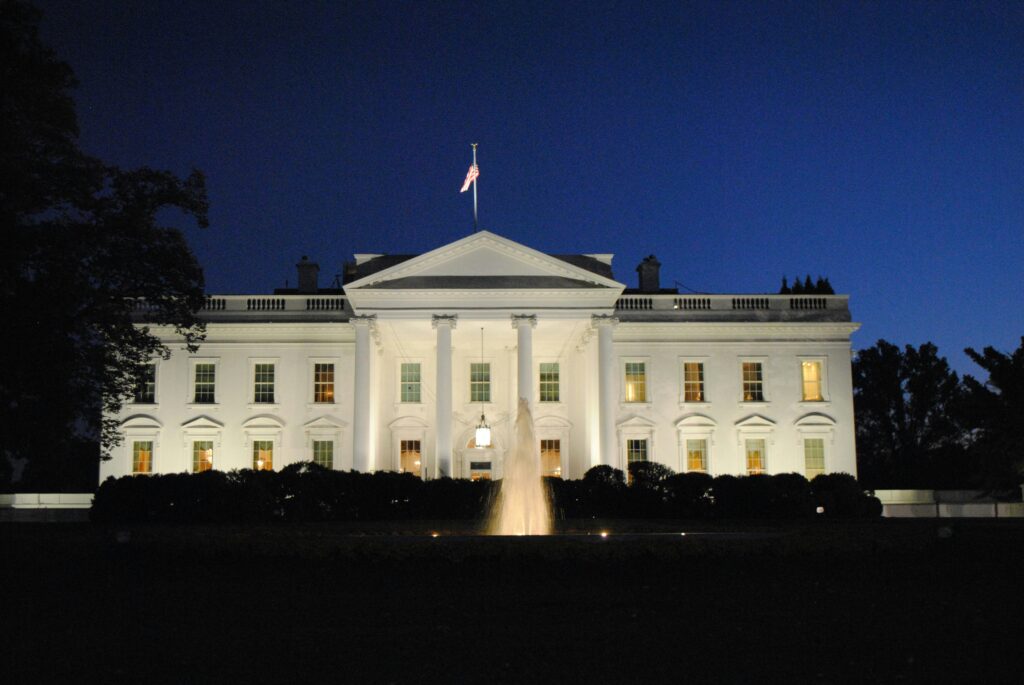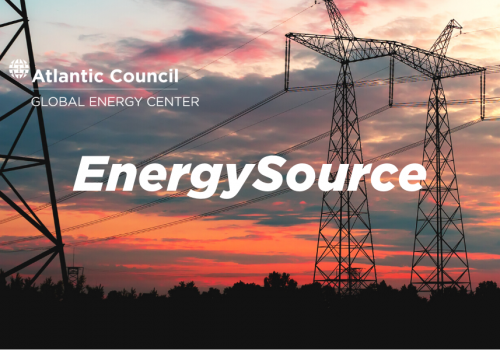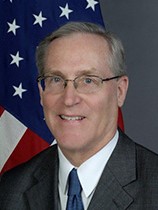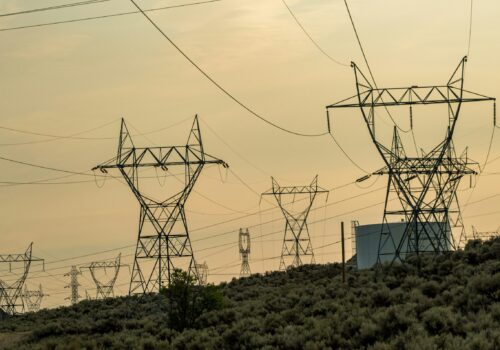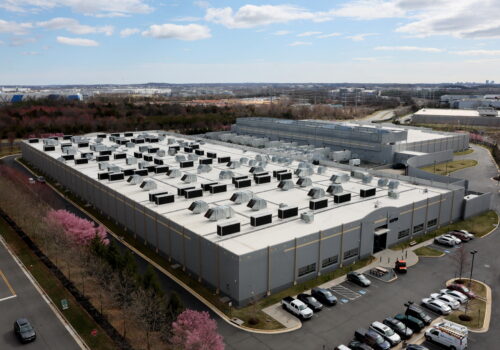The international system is experiencing a period of significant realignment, shaped by shifting geopolitical relationships, economic tensions, and evolving security challenges. Within the broader context of global uncertainty, President Donald Trump’s initial foreign policy actions during his second term, for example on trade, support for Ukraine, and foreign assistance, have contributed to questions among allies about the future trajectory of US global leadership and engagement.
STAY CONNECTED
Sign up for PowerPlay, the Atlantic Council’s bimonthly newsletter keeping you up to date on all facets of the energy transition.
This shake-up has important implications for global energy security, which has come into sharp focus since the full-scale Russian invasion of Ukraine. Considering the Trump administration’s renewed focus on an “energy dominance” agenda, including an emphasis on furthering US oil and gas production and exports, one should not overlook the equally important geopolitical aspects of the electricity sector. Increasingly relevant to global affairs, the electricity sector has experienced rapid global demand growth of 4 percent per year—often placing new energy systems at the heart of geopolitics.
As the world enters an “age of electricity,” decisions made during this second Trump administration will have far-reaching consequences impacting the future of international conflict, competition, and cooperation around the world.
Security, growth, and innovation
A dominant geopolitical feature impacting the electricity landscape is Russia’s military aggression against Ukraine, which has sharpened the confrontation between the West and a coalition of authoritarian states that have in various ways supported Russia’s war effort, including China, Iran, and North Korea. The conflict has illustrated and heightened the priority of electricity security, as the executive director of the International Energy Agency (IEA) recently emphasized to European Union (EU) leaders. The EU, with major help from US liquefied natural gas (LNG) exports, reduced its dependence on Russian gas for electricity, ramped up renewable energy to 47 percent of total generation, began to replace Russian nuclear fuels with Western sources, and disconnected the Baltic states from the Russian power grid.
Meanwhile, outside of the EU, the rest of the world saw record levels of electricity demand growth in 2024, especially in Asia, with China accounting for about half of the increase. Although the International Monetary Fund (IMF) forecasts slower world economic growth given the impact of uncertainty given ongoing trade pressure from Trump’s tariff strategy, the IEA still projects substantial electricity growth over the next three years.
Partly fueling this expected rise in demand is the explosion of digital information, along with the artificial intelligence (AI) systems to analyze this data. This trend is revolutionizing the electricity sector and creating growing demands for reliable, flexible, secure, and resilient electricity supplies for data centers and in other key civilian and military spheres. More complex and interconnected national and regional electricity grids are growing in almost all regions of the world. But these large digital systems are increasingly vulnerable to cyberattacks, especially from malign actors such as China and its Volt, Flax, and Salt Typhoon threat teams. Electricity security is therefore a vital component to national security in this new age.
This growing demand has set off a race to innovate and deploy new energy technologies. One critical strategic area is the development of advanced nuclear power systems, with designs under development to meet needs for electricity, industrial heat, desalination, military systems, district heating, data centers, hydrogen production, and shipping. There has been a resurgence of interest in nuclear power around the world—at COP28, leading countries pledged a tripling of nuclear power by 2050 from 2020 levels.
Competition for electricity markets
Against this complex backdrop, the Trump administration’s expanded use of tariffs has added new dimensions to global economic competition that is affecting relationships both allies and opponents alike. These measures have also introduced added strain on already fragile electricity supply chains, including those of power transformers, switchgear, and meters. This added pressure for the West and Western-aligned countries gives China, the world’s largest exporter of electric power equipment and electronics, an opportunity to expand further its global market presence, especially in emerging markets and developing economies (EMDEs). EMDEs generate about two thirds of the world’s power and are projected to account for 85 percent of global electricity growth over the next three years.
Moreover, over the past decade as the costs of solar and wind have dropped, EMDEs have pursued a transition to renewable energy. Although renewables supplied only 26 percent of EMDE generation in 2023, they now provide over 75 percent of new EMDE generation capacity outside of China. China’s dominance in renewables gives it significant market—and geopolitical—influence. Global installed solar photovoltaic (PV) capacity increased by 30 percent in 2024, and Chinese companies are poised to continue flooding the market with solar PV systems and components.
EMDE natural gas demand for power, which can complement intermittent renewables and improve grid reliability, and for industry is also growing. This creates space in EMDE electricity markets for a growing US role. As the world’s largest LNG exporter, the United States is looking to increase export capacity and access markets in India, Southeast Asia, and other EMDEs. Some countries may commit to increasing US LNG imports in their trade negotiations with the Trump administration to address trade imbalances and reduce tariffs. In 2024, US volumes went to 20 EMDEs and represented about 30 percent of total US LNG exports.
In the past five or so years, the United States has made significant progress in the development of advanced nuclear power systems, some of which are now beginning construction. This has placed the United States in a strong position to compete for new nuclear contracts in EMDEs, particularly to build small and micro reactors. These systems offer the prospect of lower total capital costs, faster construction times, and more appropriate sizes for the smaller grids in many of these countries than large 1000-MW reactors. Russia has dominated the international new-build market with Rosatom constructing large VVER 1000/1200 reactors in India, Bangladesh, Egypt, Turkey, Iran, and China and beginning a small modular reactor (SMR) project in Uzbekistan. China has the largest number of reactors under construction (30 domestically) and is working to expand exports of its Hualong I large reactor beyond the completed units in Pakistan as well as developing several types of SMR systems. South Korean, European, and Canadian companies are also eyeing foreign markets and nuclear supply chains for new reactors are linking companies from these regions.
Recognizing the critical role nuclear can play in meeting US electricity demand growth, the Trump administration, with bipartisan cooperation, is supporting advanced reactor development and demonstration as well as domestic uranium mining, enrichment, and fuel production efforts. Trump recently signed an executive order targeting an increase in US nuclear capacity from 100 to 400 gigawatts by 2050. Domestic growth in the sector would enable the administration to export both large AP-1000s and SMRs, with at least a dozen projects and cooperation in the works not only in advanced economies, like the United Kingdom, Canada, Poland, Romania, Bulgaria, but also with EMDEs like Ukraine, India, Ghana, Kenya, the Philippines, Indonesia, and Vietnam. Interest in SMRs is at play in most of these countries and US companies could achieve of a sizeable share of the IEA’s projected SMR global market of 120 GW by 2050.
National security and global engagement
Given its broad-based excellence in the electricity sector and emerging digital and AI technologies, the United States is well positioned to engage with allies on the adoption of technologies that advance grid reliability, flexibility, and resilience. US involvement in these growing overseas markets, valued at over $2 trillion annually, is vital to its commercial, technological, and national security interests and to restoring trust and confidence in the United States as a reliable partner.
In this effort, the United States should leverage its strengths as the largest producer of both natural gas and nuclear power to help other countries build out firm, baseload, and peaking power, helping reduce dependence on Chinese solar and battery systems in an age of electricity. But US investment both at home and abroad in renewables, energy efficiency, carbon capture, hydrogen, and other technologies is also critical to US influence in the world.
As the Trump administration reconfigures US foreign policy, it is important to forge a new partnership with industry to enhance US energy leadership and coordinate deployment of key diplomatic and economic tools—including technology and commercial agreements, policy and regulatory assistance, capital allocation, and trade and investment promotion—in a package that can be tailored to the energy needs of individual countries. In addition to bilateral efforts, successful US global leadership will require close cooperation with allies in supporting sound multilateral financial and technology cooperation mechanisms, Western-oriented regional electricity markets, and secure supply chains.
The age of electricity is coming. Will the United States step up and recognize that being a global leader in this sector is critical to its national security?
Robert F. Ichord Jr. is a nonresident senior fellow at the Atlantic Council Global Energy Center.
MEET THE AUTHOR
RELATED CONTENT
OUR WORK

The Global Energy Center develops and promotes pragmatic and nonpartisan policy solutions designed to advance global energy security, enhance economic opportunity, and accelerate pathways to net-zero emissions.
Image: The White House. (Tabrez Syed, Unsplash) https://unsplash.com/photos/white-concrete-building-during-night-time-dbc9DGSJzKo
